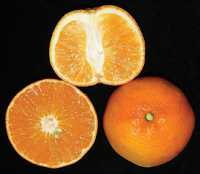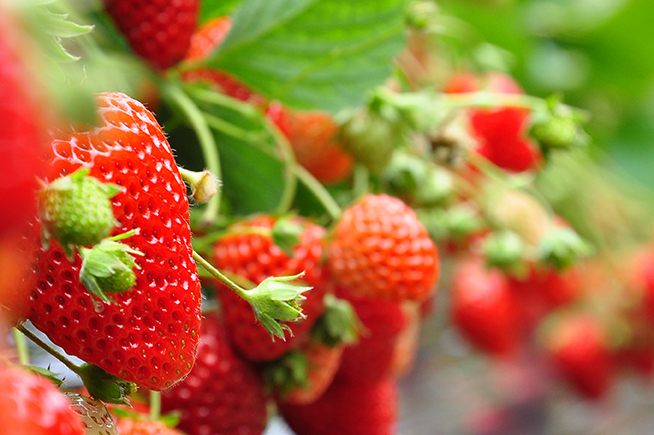What’s New In Citrus?

Those attending the Indian River Citrus Seminar in Ft. Pierce during January were eager to learn about new citrus varieties currently available or soon to be, which could give Florida growers an edge. J. Peter Chaires, executive director of the New Varieties Development & Management Corp. (NVDMC), provided an update on state and federal efforts to bring new varieties to Florida growers.
According to Chaires, growers in recent years have realized a need for help in sorting through the new varieties being developed.
“When we started to see these promising new selections and cultivars coming with patents attached, growers found themselves in the position of negotiating for licenses to plant the variety,” says Chaires. “Some of these licenses were multi-tier, so I think they saw a need for a new entity to represent them.
“This all started out on the fresh fruit side, but has expanded to processed fruit as well. This process has allowed us to get very involved in the development of new varieties.”
The NVDMC facilitates new variety development in a number of ways, including hosting grower field days, funding field trials, conducting evaluations of varieties, and helping to move along transfer agreements. According to Chaires, 70% of the NVDMC’s budget goes directly to breeding programs.
Faster Development
According to Chaires, the old model of picking out a promising variety and observing it for 15 years before release does not work in the day and age of tree removal due to citrus greening and canker. The NVDMC process can speed up that timeframe dramatically.
“It can be done within two years,” says Chaires. “We need a year to replicate results and to get proof that the variety is disease-free. Then we move it on to budwood increase. We don’t have 15 years to wait anymore. When varieties exhibit potential, we can share an honest assessment with growers, good and bad, about what this variety appears to offer. Then we will see if any growers are willing to take a risk on it.”
The University of Florida has established an Early Evaluation Opportunity (EEO) process. NVDMC has assisted the IFAS Plant Improvement Team in fast-tracking a dozen promising new citrus varieties for the EEO program. All of these must be determined to be free of disease, and then budwood increased.
If NVDMC is successful in negotiating an exclusive license for an IFAS release, it would share with growers everything that is known about the variety and be quite candid about what is not yet known. Acreage would be allotted according to what economic analysis indicates the market will bear, while avoiding undue cannibalization of existing varieties within the same harvest window. After the initial growers have produced two crops, new evaluations are made with regard to additional acreage allotments.
USDA varieties are also brought to growers earlier through a cooperative relationship with NVDMC. Varieties for which patent decisions have already been made are made available to growers for planting, packing, and/or processing. Growers are required to share information about their experience. If the patent decision has not yet been made, the varieties are made available for growers’ trials through material transfer agreements in smaller quantities.
“We want to make new varieties available to as many growers as possible without overburdening or crashing the market of other older varieties,” says Chaires.
|
Early Pride The USDA Early Pride Tangerine is a low-seeded Mutation of the Fallglo Tangerine (Bower x Temple). The Early Pride will provide our growers an early season entry that is easy peel and almost seedless. This tangerine will typically be harvested mid-October into November. Although many of the Early Pride Tangerines are seedless, they can have up to four seeds. The Early Pride is available to Florida growers for early evaluation through NVDMC. |
|
|
Seedless Surprise The USDA “Seedless Surprise” is a very early (September) maturing grapefruit-like fruit. The fruit is seedless, white-fleshed, low-acid, and non-bitter. It has a very smooth and gentle flavor that has proven quite popular in consumer taste panels. The fruit physically resembles a grapefruit, but seems to be liked by grapefruit lovers and people who do not typically care for grapefruit. This fruit is available for early evaluation plantings through the NVDMC. |
|
|
New UF Experimental Line This “yet-to-be-named” variety is a December mandarin hybrid developed by the IFAS Plant Improvement Team in Lake Alfred. This fruit was just discovered this winter, and if it produces identical fruit next year, it will be rushed to the front of the line for grower early evaluation. This hybrid is the size of a Clementine with a deep-orange exterior and brilliant-orange interior. It peels easily, is seedless, and has wonderful flavor. |
|
|
Seedless Pineapple Orange “Seedless Pineapple Orange” is very low-seeded, averaging two or fewer seeds per fruit, with many being seedless. This fruit is a mid-season orange that could be packed fresh or processed. |
|
|
Sugar Belle (LB8-9) The Sugar Belle, developed by IFAS, is a complex mandarin hybrid that closely resembles the Honey Belle, but matures four to six weeks earlier and has better color and flavor. The Sugar Belle is not seedless, but can be low-seeded or occasionally seedless when grown in solid and/or isolated blocks. It has been reported that specific growing practices can also help reduce seed counts. The Sugar Belle has been preferred by consumers over most other easy-peel selections in the December market window. |










